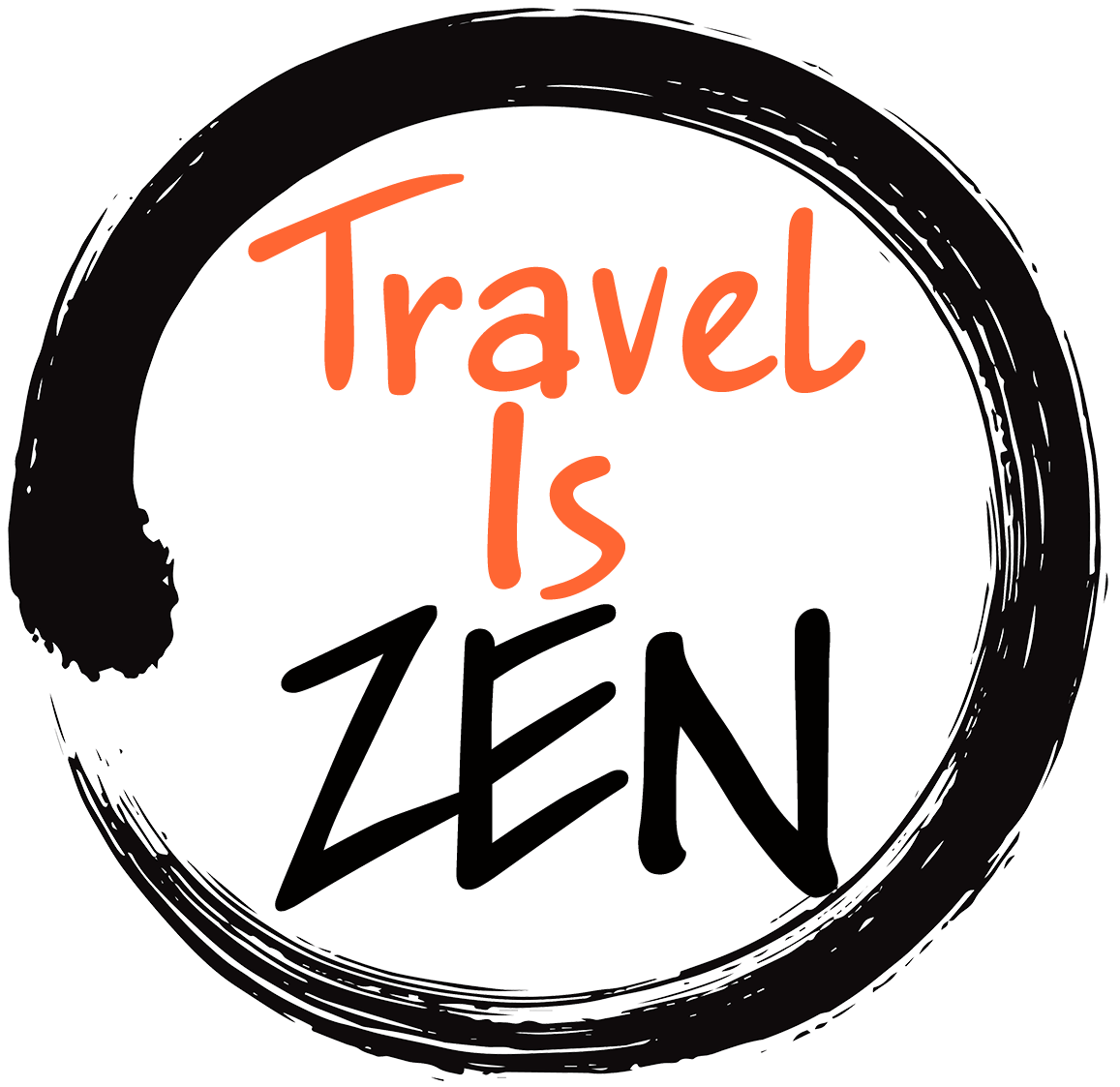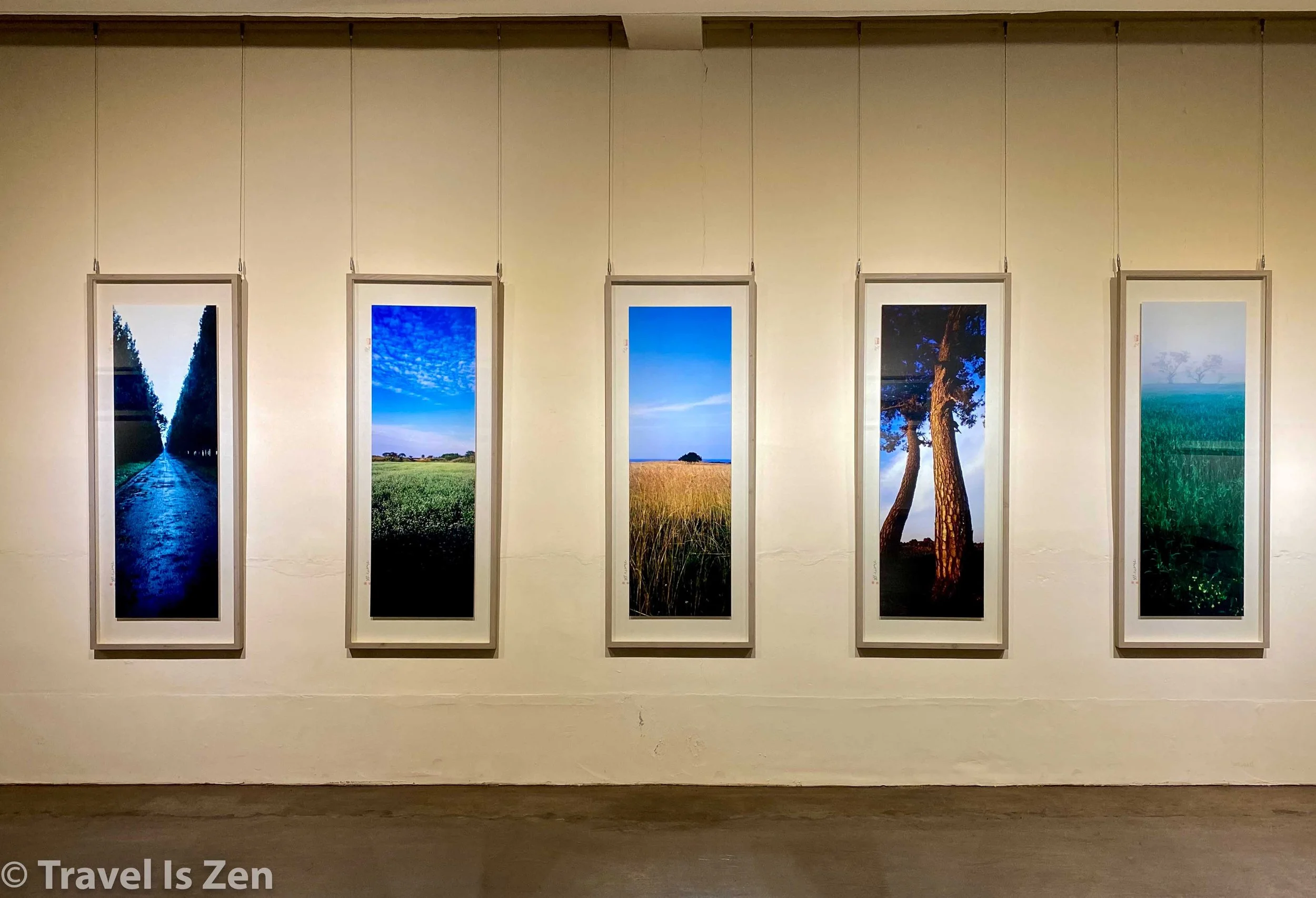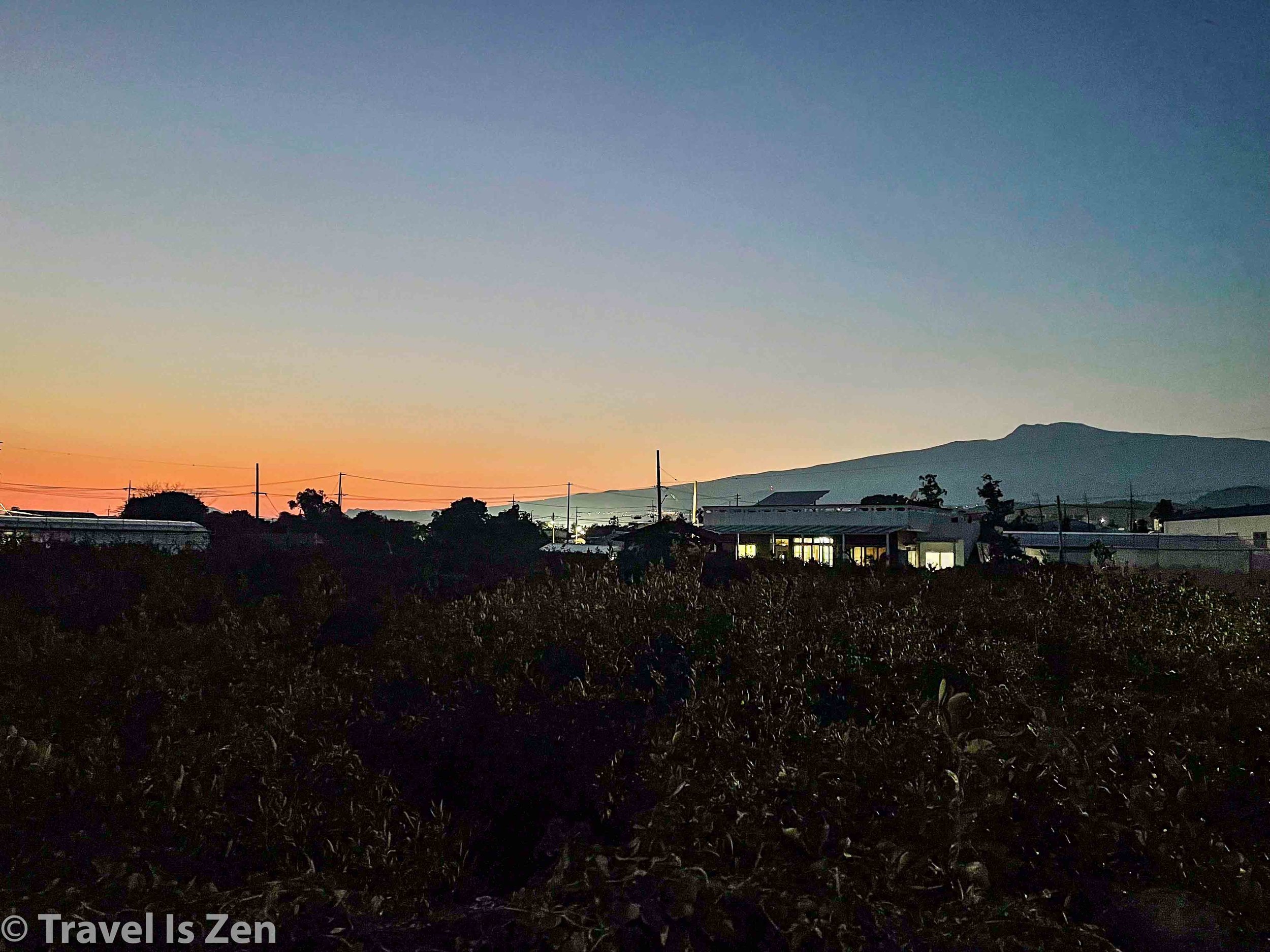Jeju Olle Trail: Daily Log Book Courses 3-5
We hiked South Korea’s Jeju Olle Trail in March of 2024. To give you a sense of “life on the trail”, I’ve published my digital logbook here with minimal edits. This post covers days 8-10, courses 3-5. Cultural highlights include Kim Young Gap’s photography gallery (Course 3), the Jeju Folk Village (Course 4), and Baramseom (바람섬) Sculpture Gallery (Course 5).
Day 8: Course 3 Onpyongpogu to Pyoseon Beach, 14 miles, warm weather with a few spotty afternoon rain drizzles
Long day ahead, but we were carrying much lighter loads thanks to the scheduled bag forwarding service. We packed all of our extra things in my backpack and left it in the minbak. In a few hours, a delivery service will pick it up and take it to the homestay we booked in Seogwipo, where we will be this weekend. Today, I carry just my shoulder bag and C carries a far lighter backpack.
This was the most remote section of the trail we have experienced. We chose the inland course 3A, which meandered past citrus trees and radish farms for several miles before humping over a couple of small oreum hills and through a pine forest, past a tea field, numerous family grave sites, then dozens of greenhouses with apple trees on vines. Nothing was open in this section - no cafes, convenience stores. We picked the wrong day to delay breakfast 😆.
Coming to Samdal-ri around noon, we came across Dumoak Gallery, a photographer’s showroom in an old schoolhouse. Kim Young Gap moved to Jeju Island from the mainland while in his twenties. He spent 20 years photographing Jeju’s fields, hills, and seasons. When he was in his forties, he was diagnosed with Lou Gehrig’s disease and spent the remainder of his short life converting an old school into a gallery to showcase his gorgeous panoramic landscapes. For 90 peaceful minutes, we savored Kim Young Gap’s gallery and explored the whimsical clay sculptures in the garden outside. We left feeling inspired by the photographer’s story and passion for his art.
Click any photo for a larger slideshow…
We had some tea in the gallery waiting for a brief rain shower to pass, then ambled down the road to the only open restaurant - a buckwheat noodle place. My kind of lunch! Bowl of hot noodle soup and buckwheat pancakes (매밀전병). There was a display of oil paintings by a local artist in the restaurant, with various scenes of Jeju. Art-full day!
We still had 5 miles to go after we wrapped up lunch at 2:00. The trail quickly intersected with 3A course at the beach and we once again traversed the sea shore. The road was desolate, with hardly any shops, traffic, or people. I saw a sign indicating that the area was a “Natural Disaster Zone”, so maybe a hurricane or typhoon damaged the area; it seemed they were in the early stages of rebuilding. Anyways, it was quiet and beautiful, walking along the cliff side, listening to the sound of the ocean waves breaking on the black lava rocks.
The end of the course provided the best views of the day as we wrapped up our long walk on two adjoining HUGE beaches: Sogeummak and Pyoseon. Gorgeous, clean expansive (low tide) beaches with just a handful of other people! It was a great way to end the day.
Sogeummak Beach 소금막 해변, Jeju Island
Pyoseon Beach 표선해수욕장, Jeju Island
We followed the course into town, hunted a bit for a place to stay and settled on a guest house at 34,000 won/night. Nice spacious clean room with two single beds, a TV, table and chairs and hot shower. Perfect!
Eating well in Jeju Island!
We had dinner in town at a 밥상 place - a giant tray of side dishes, rice, and a plate of various fried fishes. On the return to the guest house, we stopped by the supermarket for fruit and a bakery for breakfast pastries.
Day 9: Course 4 Pyoseon Beach, Jeju Folk Village, to Namwon, 15 miles, warm weather with strong winds
We started the day with pastries and fruit in the room and then headed down to the beach. Beautiful bright clear day, with a crisp view of snow-capped Hallasan! High tide at Pyoseon Beach, with a shimmering pallet of Mediterranean sea colors.
Pyoseon Beach, high tide. Jeju Olle Trail
Before setting out on the trail, we made a long stop at Jeju Folk Village, spending the entire morning there learning about life in Jeju circa 1890. Farming, fishing, and mountain livestock villages were all represented, along with explanations of various religious rituals, schools, and artistic expression.
Click any photo for a larger slideshow…
We left the Folk Village around noon, with all of course 4 still left - 12+ miles. We chose to skip lunch and eat our snacks along the way. Most of today was spent walking the road along the sea shore. We passed countless lighthouses, haenyeo stations, and fisheries, black lava rock beaches, cacti, algae and pretty spring flowers. As we walked past the fish farms, I learned the names of various fish in Korean, as each area had a specialty - flatfish (광어), tile fish (옥돔), mackerel (고등어), flounder (가자미). The sun was bright, the air warm. We had a headwind for much of the way, but it wasn’t cold; just a little harsh!
We ended the day about 5:00 pm at the end of course 4. We checked into a pension and then went for another grilled fish dinner. The wind is harsh on the skin, so bought some face masks for an evening treat 🙂.
Click any photo for a larger slideshow…
Day 10: Course 5 Namwon, Wimi, Yechonmang, 9 miles, warm and sunny all day with minimal wind
Started walking around 10:00 this morning, after a leisurely morning. Stopped for some half-dried, roasted squid to snack on along the course. Most of the walk was along the sea coast. The first section was a pretty cliff-side walk through beach flora tunnels, with viewpoints of the cliffs along the way.
Click any photo for a larger slideshow…
Namwon, Jeju Island
Then it was mostly road walking through fisheries, small neighborhoods and ports, with lots of beautiful succulents, flowering trees, and pretty spring blooms. We stopped in Wimi for kimbap at lunch, refilled our water, and had some coffee. During the second half of the walk, we popped into a small art gallery featuring haenyeo inspired sculptures by Kang Kil Soon.
We also chatted with an old local lady for a bit, who invited us to sit with her. She told us she raised 8 children, grew up nearby and was married at age 18. She told us more about her family and the neighborhood. Later, we passed by the beachside fresh water baths she told us about.
We had a harder time finding a place to stay this evening, with many pensions fully booked, no longer doing biz, or lacking a phone number or point of contact. We walked a bunch of extra miles, but finally found a guesthouse at 35,000 won. Yay! We entered town via a nice gorge walking path, with a stream to the sea - reminded us of Takachiho in Japan. Checked in and then went for dinner - had a lovely sunset on the way back.
Yechonmang, Jeju Island Korea





































































